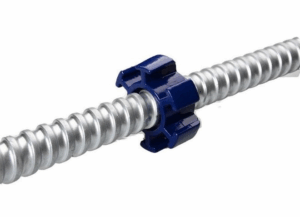目录
ToggleUnderstanding the Role of Ground Anchor Bolts in Construction
Ground anchor bolts are essential components that secure structures to their foundations, ensuring stability against wind, seismic activity, and other external forces. For beginners, understanding their installation is crucial not only for safety but also for compliance with building standards. Properly installed ground anchor bolts minimize the risk of structural failure and extend the life of the construction.
This guide walks you through the key steps, common challenges, and expert tips for installing ground anchor bolts effectively.
Preparing for Ground Anchor Bolts Installation
Choosing the Right Type of Ground Anchor Bolts
Selecting appropriate bolts is the foundation of a successful installation. Consider:
-
Material durability – Stainless steel or hot-dip galvanized bolts for corrosion-prone environments.
-
Bolt size and length – Based on load requirements and soil conditions.
-
Protective coatings – Epoxy or zinc coatings for additional resistance.
Consulting structural engineers during this phase ensures the selected bolts meet project specifications.
Assessing Site Conditions
Before installation, evaluate the location:
-
Soil composition affects embedment depth and anchoring strength.
-
Drainage considerations help prevent water accumulation around bolts.
-
Accessibility for future maintenance should also be factored in.
Step-by-Step Process for Installing Ground Anchor Bolts
Step 1: Mark Anchor Locations Precisely
Use detailed design drawings to mark the exact spots for bolt placement. Accurate positioning avoids alignment issues with structural components.
Step 2: Drill or Form Holes in Foundations
Depending on the construction phase:
-
For new foundations: Position bolts before pouring concrete.
-
For existing foundations: Drill holes using a rotary hammer and clean out debris for a secure fit.
Step 3: Insert and Secure Ground Anchor Bolts
-
Place the bolt into the hole with correct orientation and depth.
-
Apply grout or anchoring adhesive where needed for added stability.
-
Check alignment using levels to prevent future structural stress.
Step 4: Tighten and Torque
Once the concrete has cured or adhesives set, tighten nuts with a torque wrench to manufacturer specifications. Avoid over-tightening, which may damage threads or surrounding materials.
Common Mistakes to Avoid During Installation
Improper Embedment Depth
Bolts that are too shallow can compromise holding power. Always follow recommended embedment guidelines based on structural load calculations.
Neglecting Protective Measures
Failing to apply protective coatings or caps leaves bolts vulnerable to corrosion. Ensure all exposed components are adequately protected.
Misalignment with Structural Elements
Even slight deviations can lead to costly adjustments or weakened connections. Double-check all placements before concrete pouring or final tightening.
Tips for Ensuring Long-Term Performance of Ground Anchor Bolts
Regular Inspections After Installation
To maintain structural integrity:
-
Inspect for signs of corrosion or loosening annually.
-
Reapply protective coatings if wear is detected.
-
Retorque bolts in high-vibration areas periodically.
Upgrading for Harsh Environments
In coastal or industrial regions, consider advanced solutions such as:
-
Duplex coatings for superior corrosion protection.
-
Sacrificial anodes to counter electrochemical reactions in moist soils.
Why Consumers Should Care About Proper Bolt Installation
Investing in quality ground anchor bolts and correct installation saves time, money, and stress in the long run. Poor installation can lead to:
-
Structural instability during extreme weather.
-
Increased maintenance costs due to premature failure.
-
Safety risks and possible legal liabilities.
Understanding and applying best practices ensures your property remains secure for decades.
Conclusion: Laying a Strong Foundation With Ground Anchor Bolts
Installing ground anchor bolts may seem technical, but a methodical approach makes the process manageable even for beginners. By choosing the right bolts, preparing the site carefully, and following proper installation steps, you create a solid foundation for any structure.
Regular inspections and maintenance further ensure these critical components continue to perform their role effectively. For homeowners and contractors alike, mastering these basics is a smart investment in structural safety and durability.
0